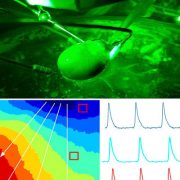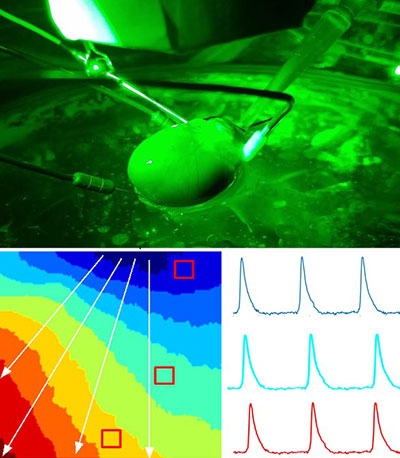The linkage between chemicals used in plastics and cardiovascular disease

For people across the globe, plastics are synonymous with modern life and it’s impossible to avoid exposure to them, including clinical environments where a variety of frequently used materials, such as tubing and blood storage bags, are made from plastics.
For people across the globe, plastics are synonymous with modern life and it’s impossible to avoid exposure to them, including clinical environments where a variety of frequently used materials, such as tubing and blood storage bags, are made from plastics. Led by Nikki Posnack, Ph.D, principal investigator at The Sheikh Zayed Institute for Pediatric Surgical Innovation at Children’s National Hospital, a team of Children’s National researchers has been studying the potential effects of chemicals found in plastics, such as BPA and DEHP, as possible contributors to cardiovascular disease.
Along with conducting proprietary studies of the potential effects, Posnack and her team recently reviewed available scientific studies to further identify and illuminate the potential links between exposure to the synthetic additives contained in plastics and cardiovascular mortality. The article was published this month in Nature Reviews Cardiology.
In the article Posnack cites a 10-year longitudinal study with the finding that high exposure to BPA was associated with a 46-49% higher hazard ratio for cardiovascular and all-cause mortality, compared with low exposure to BPA.
“Plastics may be indispensable materials, but their ubiquity does raise concerns about the effects of our continuous exposure to plasticizer additives like di(2-ethylhexyl) phthalate (DEHP) and synthetic chemicals used to create polymers like BPA,” said Posnack. “Although disease causation can be difficult to pinpoint in population and epidemiological studies, experimental work has clearly demonstrated a direct link to plastic chemicals and cardiac dysfunction. It is clear that future collaborative endeavors are necessary to bridge the gap between experimental, epidemiological and clinical investigations to resolve the impact of plastics on cardiovascular health.”

Nikki Posnack, Ph.D, principal investigator at The Sheikh Zayed Institute for Pediatric Surgical Innovation at Children’s National Hospital.
Posnack added that, given the omnipresence of plastics and their related chemicals, biomonitoring studies have reported detectable levels of DEHP and BPA in 75-90% of the population. Occupational or clinical environments can also result in elevated exposures to these dangerous chemicals. Previous epidemiological studies have reported links between elevated urinary levels of phthalate or bisphenol, common additives in plastic, and an increased risk of coronary and peripheral artery disease, chronic inflammation, myocardial infarction, angina, suppressed heart rate variability and hypertension.
Additionally, available research has shown that incomplete polymerization or degradation of BPA-based plastic products can result in unsafe human exposure to BPA. Despite these links, the article points out, both BPA and DEHP are still manufactured in high volumes and are used to produce a wide variety of consumer and commercial products.
Further exploring implications for pediatrics, a June 2020 article published by Posnack in Birth Defects Research looks at the potential effects of plastic chemicals on the cardiovascular health of fetal, infant and pediatric groups. The article highlighted experimental work that suggests plasticizer chemicals such as bisphenols and phthalates may exert negative influence on pediatric cardiovascular health. The article systematically called out areas of concern supported by research findings. Also addressing current gaps in knowledge, Posnack outlined future research endeavors that would be needed to resolve the relationship between chemical exposures and the impact on pediatric cardiovascular physiology.
In related work, Posnack and her team are expanding their work on plastics used in blood bags to also investigate the role of blood storage duration on health outcomes. A recently published first study demonstrates that “older” blood products (stored 35 or more days) directly impact cardiac electrophysiology, using experimental models. Published October 22, 2020 in the Journal of the American Heart Association, the study concludes that the cardiac effects are likely caused by biochemical alterations in the supernatant from red blood cell units that occur over time, including but not limited to, hyperkalemia (elevated potassium levels).






